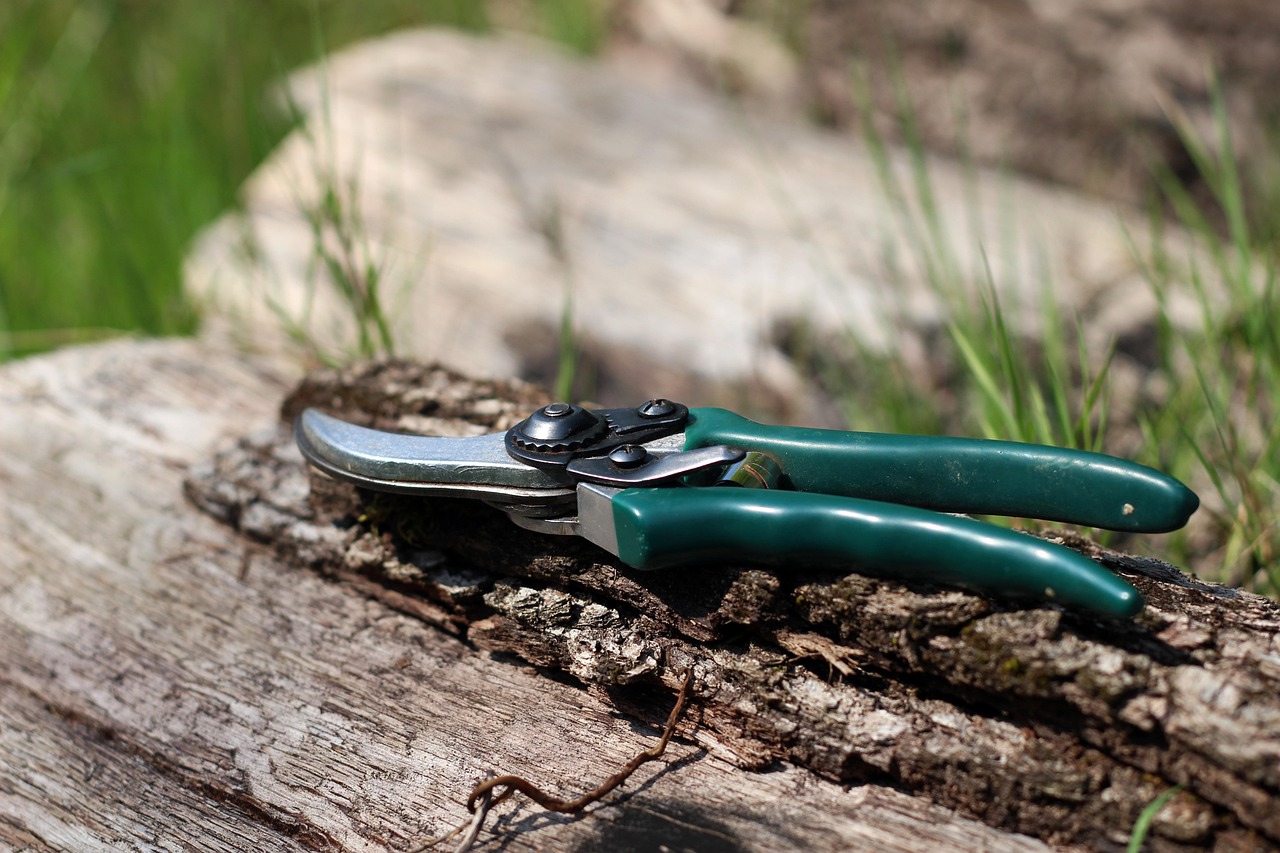Routine pruning in home gardens promotes healthier plants, enhances growth, and improves air circulation. It also helps maintain the desired shape of plants while reducing the risk of diseases and pests. Overall, it is essential for maximizing the beauty and productivity of your garden.
Pruning is a vital gardening practice that involves selectively removing parts of a plant, such as branches, buds, or roots. When done correctly, pruning can significantly benefit not only the aesthetics of your garden but also the health of your plants. Many gardeners may overlook this essential task, thinking it is unnecessary or too time-consuming. However, understanding the benefits of routine pruning can encourage more homeowners to incorporate it into their gardening routines.

There are several reasons why pruning is beneficial for home gardens. First and foremost, it encourages healthy growth by removing dead or diseased wood. This action allows the plant to focus its energy on new growth instead of maintaining unhealthy parts. Additionally, pruning improves air circulation and sunlight penetration, which are crucial for plant health.
Benefits of Routine Pruning
Routine pruning provides numerous advantages that contribute to the overall vitality of your garden. Below are some key benefits:
- Encourages New Growth: Pruning stimulates the growth of new shoots and flowers. This results in a more vibrant and lush garden.
- Improves Air Circulation: By removing excess branches, pruning allows better airflow among plants. This reduces the likelihood of fungal infections and pests.
- Shapes Plants: Regular pruning helps maintain the desired shape and size of plants. This is particularly important for ornamental shrubs and trees.
- Enhances Fruit Production: For fruit-bearing plants, appropriate pruning can lead to a more abundant harvest by allowing better light exposure to the fruiting branches.
- Reduces Risk of Disease: By removing dead or diseased parts, you minimize the chances of infections spreading throughout the plant.
- Increases Longevity: Regular maintenance through pruning can extend the lifespan of plants by promoting overall health.
In addition to these benefits, routine pruning can also enhance the aesthetic appeal of your garden. Well-pruned plants look neater and more attractive. They can create defined spaces and help highlight specific areas of your garden design. Homeowners often find that a well-maintained garden not only enhances their property but also increases its value.

Understanding when and how to prune is also crucial for maximizing these benefits. Different plants have different pruning needs based on their species and growth habits. For example, some trees benefit from winter pruning when they are dormant, while others may require summer pruning to control their growth. Knowing these specifics can greatly enhance the effectiveness of your pruning efforts.
Common Pruning Techniques
There are various techniques used in routine pruning that cater to different types of plants and desired outcomes. Here are some common methods:
- Thinning: This technique involves selectively removing branches to improve light penetration and air circulation within the plant.
- Heading Back: Cutting back the tips of branches encourages bushier growth and a denser appearance.
- Crown Reduction: This method reduces the overall size of a plant by selectively removing branches while maintaining its natural shape.
- Renewal Pruning: Primarily used for older shrubs, this technique involves cutting back older stems to encourage new growth from the base.
The choice of technique depends on the type of plant and the desired outcome. It is essential to research specific plants to determine the best approach for effective pruning.

Moreover, proper tools play a crucial role in successful pruning. Using sharp and clean tools helps ensure clean cuts that heal quickly and reduce the risk of disease. Common tools include bypass pruners, loppers, and saws, each suited for different sizes and types of branches.
Timing Your Pruning
The timing of pruning is as important as the technique used. Pruning at the wrong time can result in damage to the plant or reduced flowering and fruiting. Here are some general guidelines:
| Plant Type | Best Time to Prune | Notes |
|---|---|---|
| Deciduous Trees | Late winter or early spring | Before new growth begins |
| Flowering Shrubs | After flowering | Avoid cutting off flower buds |
| Fruit Trees | Late winter | Aim for minimal stress during blooming |
| Perennials | Early spring or fall | Remove dead stems before new growth emerges |
By adhering to these guidelines, gardeners can effectively promote healthy growth and maintain beautiful landscapes throughout the seasons.

Understanding the Tools for Pruning
Using the right tools for pruning is essential for achieving effective results. Each tool serves a specific purpose and is designed to handle different types of branches and plants. Having the proper equipment not only makes the task easier but also promotes plant health by ensuring clean cuts. Below are some common pruning tools and their uses:
- Bypass Pruners: Ideal for cutting live branches up to ¾ inch thick. They have two blades that bypass each other, making clean cuts that promote healing.
- Anvil Pruners: Best suited for dead wood. They feature one sharp blade and a flat surface against which the wood is cut.
- Loppers: Designed for thicker branches (up to 2 inches). They have long handles for added leverage and come in both bypass and anvil styles.
- Pruning Saws: Useful for cutting larger limbs that cannot be handled by pruners or loppers. They come in various sizes and types, including folding and hand saws.
- Hedge Shears: Perfect for shaping hedges and shrubs. They have long blades that allow for even trimming across larger areas.
- Pole Pruners: Equipped with a long handle that allows you to reach high branches without a ladder. They can be manual or powered.
Proper Pruning Techniques
Once you have the right tools, knowing how to use them correctly is crucial. Applying proper techniques will ensure that you do not damage the plant while maximizing its health and growth potential. Here are some essential pruning techniques:
Making Clean Cuts
When pruning, it is essential to make clean cuts at a 45-degree angle. This technique helps prevent water from pooling on the cut surface, which can lead to rot or disease. Always prune just above a node or bud to encourage new growth from that point.
Avoiding Topping
Topping is the practice of cutting off the tops of trees or shrubs indiscriminately. This technique can harm plants by encouraging weak growth and exposing them to diseases. Instead, focus on selectively removing branches that disrupt the plant’s shape or health.
Pruning in Stages
For larger plants, consider pruning in stages rather than all at once. This approach reduces stress on the plant and allows it to adapt gradually to changes. Start by removing any dead or diseased wood before addressing structural issues.
Signs That Your Plants Need Pruning
Recognizing when to prune your plants is vital for maintaining their health. Here are some signs that indicate it’s time to take action:
- Dead or Diseased Branches: Look for branches that are brown, brittle, or show signs of disease such as discoloration or fungus.
- Overgrown Plants: If your plants have outgrown their space or appear unruly, it may be time for a trim.
- Poor Air Circulation: If you notice crowded branches that impede airflow, thinning them out can help improve overall health.
- Lack of Flowers or Fruit: If your flowering or fruiting plants are not producing as they should, pruning may stimulate growth and production.
Seasonal Pruning Considerations
Different seasons bring unique challenges and opportunities for pruning. Understanding how seasonal changes affect plants can help you determine the best times for pruning tasks.
Spring Pruning
Spring is an excellent time to prune most deciduous trees and shrubs as they prepare for new growth. Focus on removing dead or damaged wood and shaping the plant as needed. Avoid heavy pruning just before flowering, as this can reduce blooms.
Summer Pruning
Summer is ideal for managing growth and maintaining shape. Light pruning can be done during this time to control size and encourage bushier growth. It is also a good time to address any problematic branches that may be obstructing sunlight or airflow.
Fall Pruning
Fall is typically not recommended for major pruning tasks since plants are preparing for dormancy. However, you can still remove dead wood and make light adjustments to promote better health going into winter.
Winter Pruning
Winter is often considered the best time for heavy pruning, especially for deciduous trees. During dormancy, plants are less stressed, making it easier to shape them without disrupting their growth cycles. Always ensure that temperatures are above freezing to avoid damaging the plant tissue.
The Role of Pruning in Pest Management
Routine pruning plays a significant role in pest management within home gardens. By maintaining healthy plants, you can prevent infestations and the spread of diseases. Here are some ways pruning contributes to pest control:
- Removing Infested Areas: Regularly inspect your plants for signs of pests. Promptly removing infested branches can help contain outbreaks.
- Encouraging Natural Predators: Healthy plants attract beneficial insects that prey on pests. By keeping your garden vibrant through pruning, you create an inviting environment for these allies.
- Minimizing Hiding Places: Thinning out dense foliage reduces hiding spots for pests, making it easier to manage their populations.
Incorporating routine pruning into your gardening practices not only enhances plant health but also contributes to a more productive and beautiful garden environment. By understanding the tools needed, proper techniques, seasonal considerations, and pest management strategies, you can ensure that your home garden thrives year-round.
Pruning for Aesthetic Appeal
Beyond health and productivity, routine pruning also plays a vital role in enhancing the aesthetic appeal of home gardens. Well-maintained plants contribute to a visually pleasing landscape, making your outdoor space more inviting. This section explores how pruning can improve the overall look of your garden.
Creating Defined Shapes
One of the primary benefits of pruning is the ability to shape plants. Different pruning techniques can help create specific forms, whether you prefer a formal, structured appearance or a more natural look. Here are some common shaping techniques:
- Topiary: This technique involves training plants into ornamental shapes, such as animals or geometric forms. Regular pruning is essential to maintain these designs.
- Espalier: This method trains trees or shrubs to grow flat against a wall or fence. Pruning helps control growth and encourages horizontal branching.
- Shear Trimming: Often used for hedges, this technique creates clean lines and uniform heights. It is essential to prune regularly to achieve the desired shape.
Encouraging Blooming
Many flowering plants benefit significantly from pruning, which can lead to enhanced blooms. By removing spent flowers and deadheading, you encourage further flowering and vibrant displays. Here are some tips on promoting blooms through pruning:
- Deadheading: This process involves removing faded flowers to stimulate new blooms. Regular deadheading can prolong the flowering season.
- Crown Thinning: Selectively removing branches from the center of flowering plants can improve air circulation and light penetration, resulting in more abundant blooms.
- Timing Pruning Correctly: Knowing when to prune specific flowering plants is crucial. For instance, spring-flowering shrubs should be pruned after they bloom, while summer bloomers can be pruned in early spring.
Enhancing Garden Design
Effective pruning contributes to overall garden design by allowing homeowners to highlight specific features and create focal points. Strategic pruning can help draw attention to beautiful plants or garden structures. Here are some ways pruning enhances garden design:
Creating Focal Points
By selectively pruning certain plants, you can create focal points that catch the eye. Consider using taller plants or unique specimens as centerpieces in your garden. Pruning these plants to maintain their shape will ensure they stand out in the landscape.
Layering Plants
Pruning helps achieve a layered effect in your garden design. Taller plants can provide a backdrop for medium-sized shrubs, while low-growing flowers can fill in the foreground. Pruning ensures that each layer receives adequate sunlight and air, preventing overcrowding.
Framing Views
Strategically pruned trees and shrubs can frame views of your garden or surrounding landscape. By selectively removing branches, you can open up sight lines while maintaining the integrity of the plant’s overall shape.
The Environmental Impact of Pruning
Routine pruning not only benefits individual gardens but also has broader environmental implications. Healthy plants contribute to improved biodiversity and ecosystem stability. Here are some environmental benefits of effective pruning:
Promoting Biodiversity
A well-maintained garden provides habitats for various wildlife, including birds, insects, and beneficial organisms. By maintaining healthy plants through pruning, you create an environment that supports a diverse range of species. Here are some ways pruning contributes to biodiversity:
- Diverse Plant Life: Regular pruning encourages the growth of various plant species by promoting healthy competition for resources.
- Habitat Creation: Plants that are pruned correctly can provide nesting sites for birds and habitats for beneficial insects.
- Pollen and Nectar Sources: Flowering plants that are properly maintained through pruning attract pollinators, supporting local ecosystems.
Improving Air Quality
Plants play a crucial role in improving air quality by absorbing carbon dioxide and releasing oxygen. Regular pruning enhances plant health, allowing them to function optimally in this regard. Healthy plants can also filter pollutants from the air, contributing to a cleaner environment.
Common Mistakes to Avoid When Pruning
While pruning is beneficial, it can be counterproductive if done incorrectly. Home gardeners should be aware of common mistakes that can harm their plants. Below are several mistakes to avoid:
- Pruning at the Wrong Time: As mentioned earlier, timing is crucial when it comes to pruning. Cutting back plants during their active growth phase may hinder their development.
- Over-Pruning: Removing too much foliage can stress plants and lead to poor health. Always follow guidelines specific to each plant species.
- Neglecting Tool Maintenance: Using dull or dirty tools can cause damage to plants and introduce diseases. Ensure tools are clean and sharp before each pruning session.
- Lack of Planning: Pruning without a clear strategy can lead to unsightly results. Take time to assess which branches need removal and how it will impact the plant’s overall shape.
Avoiding these common pitfalls will help ensure that your pruning efforts result in healthier plants and a more attractive garden.
Maintaining a Pruning Schedule
Establishing a routine pruning schedule can significantly enhance the effectiveness of your gardening efforts. By planning your pruning tasks throughout the year, you ensure that each plant receives the appropriate care it needs at the right time. Here are some tips for creating a pruning schedule:
- Assess Plant Growth Cycles: Understand the growth cycles of the plants in your garden. This knowledge allows you to time your pruning effectively to coincide with periods of dormancy or active growth.
- Set Seasonal Reminders: Create reminders in your calendar for seasonal pruning tasks. This practice helps ensure you do not forget essential pruning dates.
- Document Your Progress: Keep a gardening journal to document when and how you prune each plant. This record can help you track patterns and improve your techniques over time.
- Adjust as Needed: Be flexible in your approach. If you notice that certain plants require more attention than others, adjust your schedule to accommodate their specific needs.
Engaging with Local Gardening Communities
Joining local gardening groups or online communities can provide valuable insights into effective pruning practices. Engaging with other gardeners will allow you to share experiences, ask questions, and learn from one another. Here are some benefits of connecting with gardening communities:
- Access to Expertise: Many community members may have extensive horticultural knowledge and can offer advice based on their experiences.
- Workshops and Events: Local groups often organize workshops, demonstrations, and events focused on gardening techniques, including pruning.
- Networking Opportunities: Building relationships within gardening communities can lead to collaborations, plant exchanges, and shared resources.
- Support and Motivation: Being part of a community can provide encouragement and motivation to maintain your gardening efforts, including regular pruning.
Considering Organic Pest Management Practices
In addition to pruning, incorporating organic pest management practices can further enhance the health and vitality of your garden. Here are some strategies to consider:
- Companion Planting: Planting certain plants together can naturally deter pests and promote healthy growth. Research companion planting strategies that benefit your garden.
- Natural Predators: Encourage beneficial insects, such as ladybugs and lacewings, that prey on harmful pests. You can attract these allies by planting diverse flora.
- Organic Treatments: Use organic sprays or treatments for pest control, avoiding harsh chemicals that may harm beneficial insects or the environment.
- Regular Monitoring: Keep a close eye on your plants for signs of pests or diseases. Early detection allows for timely intervention and minimizes damage.
Conclusion
Routine pruning is a fundamental aspect of maintaining a healthy and beautiful home garden. The benefits of this practice extend beyond aesthetics; they include improved plant health, enhanced growth, disease prevention, and increased fruit production. Understanding the tools needed, proper techniques, and seasonal considerations allows gardeners to maximize the effectiveness of their pruning efforts.
Moreover, incorporating pruning into a broader gardening strategy that includes pest management and community engagement can lead to even greater success. By fostering a vibrant garden ecosystem, homeowners can enjoy the fruits of their labor while contributing positively to their environment.
Ultimately, regular pruning is not just a chore; it is an opportunity for gardeners to connect with their plants, enhance their outdoor spaces, and cultivate a thriving garden that brings joy and beauty throughout the year. Embrace the art of pruning, and watch as your garden flourishes like never before.
